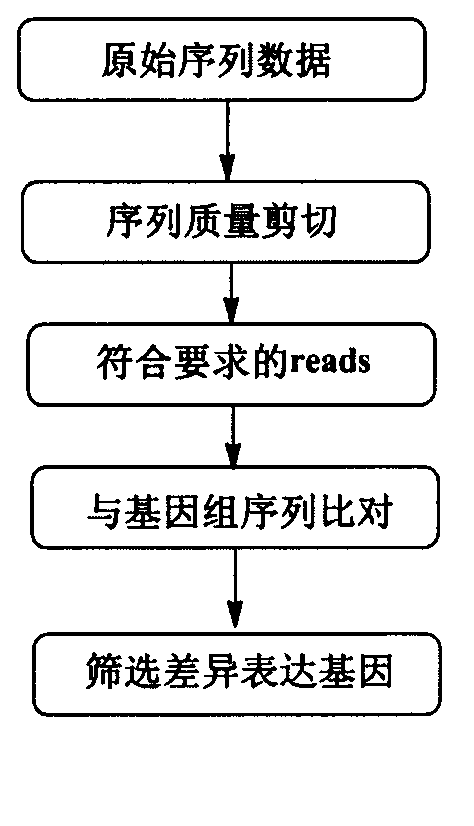Method for screening lactobacillus plantarum ST-III salt-tolerance gene
The technology of Lactobacillus plantarum and salt tolerance gene is applied in the field of screening Lactobacillus plantarum ST-III salt tolerance gene, which can solve the problem that bacteria are not completely involved, and achieve the effect of strong salt tolerance and improved salt tolerance.
- Summary
- Abstract
- Description
- Claims
- Application Information
AI Technical Summary
Problems solved by technology
Method used
Image
Examples
Embodiment Construction
[0031] In view of the current lack of molecular information on the salt-tolerance mechanism of Lactobacillus plantarum, the salt-tolerant gene of Lactobacillus plantarum ST-Ⅲ was discovered for the first time using RNA-seq technology, and the culture of Lactobacillus plantarum ST-Ⅲ without NaCl and 6% NaCl was obtained. Transcripts of gene expression during culture in medium. The present invention will be further described below in conjunction with specific embodiments and accompanying drawings.
[0032] The screening method of Lactobacillus plantarum ST-Ⅲ salt tolerance gene of the present invention preferably comprises the following steps in sequence:
[0033] 1. Handling of experimental materials
[0034] (1) Streak Lactobacillus plantarum ST-Ⅲ on a chemically defined medium (CDM) solid plate, culture it upside down at 37°C until a single colony grows, pick a single colony and inoculate it into liquid CDM medium, and culture it statically at 37°C 12h;
[0035] (2) The ab...
PUM
 Login to View More
Login to View More Abstract
Description
Claims
Application Information
 Login to View More
Login to View More - R&D
- Intellectual Property
- Life Sciences
- Materials
- Tech Scout
- Unparalleled Data Quality
- Higher Quality Content
- 60% Fewer Hallucinations
Browse by: Latest US Patents, China's latest patents, Technical Efficacy Thesaurus, Application Domain, Technology Topic, Popular Technical Reports.
© 2025 PatSnap. All rights reserved.Legal|Privacy policy|Modern Slavery Act Transparency Statement|Sitemap|About US| Contact US: help@patsnap.com



